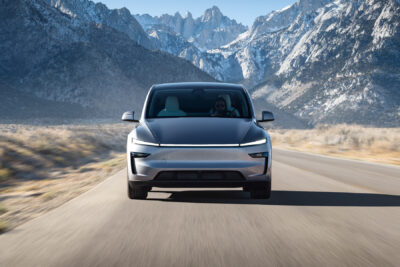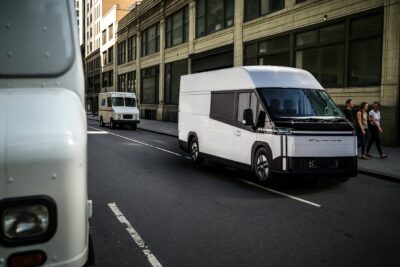Mexico wants to build affordable electric cars
The schedule now presented is tight: the first model is set to be unveiled at the opening match of the 2026 World Cup in the Aztec Stadium, i.e. on 11 June 2026, with production set to start in the same year. However, the government is not going for a centralised plant, but for regional production.
Politically, the project is at the very top of the state apparatus, as Olinia, which according to Mexican media means ‘movement’ in the indigenous language Náhuatl, was personally presented by President Claudia Sheinbaum. “This small car must be safe, electric, able to be connected to any outlet and have most of its components be Mexican,” said Sheinbaum. “So, little by little, we will build this production chain.”
However, the government only wants to initiate the project; private companies will later drive Olinia forward. “The idea is that the government supports the Secretariat to generate this design, and then when it comes to building the vehicles, the parts can be built in different places and assembled in different places,” the president is quoted as saying in the press release. The ‘Secretariat’ refers to the recently created Secretariat for Science, Humanities, Technology and Innovation, established as a new ministry under Sheinbaum. The aim is to keep transport costs low. It remains to be seen whether the lack of economies of scale with lower unit numbers per location will eat up the advantages in transport costs.



According to the newspaper Mexico Now, one of the production plants will be located in the north-western state of Sonora. The president also mentioned Sonora in a simple example, but did not directly confirm that a plant would be built there. “Because taking a car from Sonora to Yucatan is expensive and would increase the cost of the vehicle. If we can have an assembly plant in Yucatan and one in Sonora, it would be very good to have regional assembly plants that allow us to provide the vehicle at a lower cost,” said Sheinbaum.
However, the budget is particularly surprising given the ambitious schedule: The government has selected the National Polytechnic Institute (IPN) and the National Technological Institute of Mexico (TecNM) to develop the mini-vehicle technology and has allocated a sum of 25 million pesos for 2025 – the equivalent of around 1.2 million euros.
However, it should also be mentioned that the three models are not intended to be fully-fledged small cars, but rather light electric vehicles – although no exact data has been published, these vehicles are most likely to be classed as L7e in Europe. Two models are mini-vehicles for young people and families living in urban areas – i.e. a three- and five-door model with a similar basic concept. The third model is intended as a small delivery van for last-mile logistics. All three vehicles will be built on a common multi-purpose platform. The chassis, engine and battery are to be identical in each case. However, the renderings that Sheinbaum showed during the press conference are intended to be more illustrative and do not provide an immediate preview of the actual products.
Priced at a maximum of 150,000 pesos, the vehicles would be significantly more affordable than electric cars currently available in Mexico. According to Mexico News Daily, vehicles from JAC, Renault and BYD currently start at around 350,000 pesos or just over 17,000 euros. Operating costs are also said to be lower, as are CO2 emissions.
The Mexican government is also focussing on road safety: Although electric micro-vehicles have not exactly been known for their high safety standards to date, Olinia’s electric vehicles will be established as an alternative to motorbikes. ‘“Motorcycles are popular, but also risky,” said Sheinbaum. ‘Traffic accidents involving them have risen considerably […] so, this small vehicle must have the following characteristics: safe, electric and primarily made in Mexico.”
Automakers such as General Motors, Ford, Volkswagen, Audi, BMW and Mercedes-Benz already manufacture electric cars in Mexico – in the case of the Ford Mustang Mach-E for the global market, GM imports the Chevrolet Equinox EV and Blazer EV to the US, and Audi is known to be relocating production of the Q8 e-tron from Brussels to San José Chiappa. Tesla’s planned Giga Mexico in the state of Nuevo Leon, which is already under construction, is currently on hold.




0 Comments